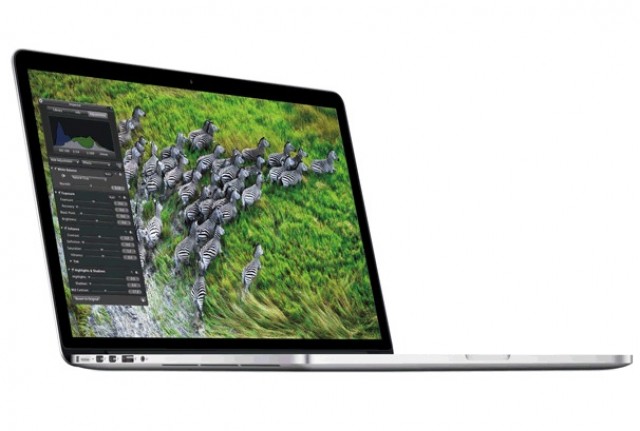In the run up to the release of the new iPad, there were many rumors that Apple was going to use Sharp IGZO display technology to make a much more bright and vibrant Retina iPad with much better battery efficiency.
That didn’t pan out: Sharp delayed the debut of IGZO, and Apple instead was forced to release a Retina iPad that was thicker than the iPad 2 in order to accomodate a bigger battery necessary to drive the display.
But according to one expert, IGZO may have crept into the new Retina MacBook Pros…
Dr. Raymond Soneria of DisplayMate Technologies did a breakdown of the new Retina MacBook Pro display, and speculates:
Traditional high PPI displays (with amorphous Silicon) are inefficient with both brightness and power. As a result, the new iPad 3 with a Retina Display needs a 70 percent larger battery than the non-Retina Display iPad 2, but the MacBook Pro with Retina Display has only a 23 percent larger battery with the same 7 hour running time as the non-Retina Display MacBook Pro. How can this be? You may recall that IGZO technology has been making headlines for months, first rumored to be the technology used in the Retina Display for the new iPad 3. IGZO is significantly more efficient than amorphous Silicon. It wasn’t ready in time for the new iPad 3, but Sharp announced that production of IGZO LCDs with up to 300 PPI started in March of 2012… Just in time for the MacBook Pro… These facts lead me to speculate that the MacBook Pro is using a Sharp IGZO Retina Display…
This is an interesting theory. Here’s how IGZO works.
In an LCD display, you have a certain number of pixels, all of which must be connected with transistors so that they can be controlled. The problem with this transistor layer is that it exists between the pixels themselves and the backlight, meaning that it partially obscures the light that is meant to shine through the pixels. The result is that much of the light emitted by the backlight is lost, and so the backlight must shine all the brighter (and therefore use up more battery) in order to appear of sufficient brightness to a user. IGZO technology lets a lot more light through the transistor layer, leading to substantial battery savings.
At first blush, Soneira’s claim that the new Retina MacBook Pros have IGZO displays is a compelling one. As Soneira says, the new MacBook Pros do not seem to have the same increase in battery life that the new iPad required when it made the jump to Retina. In addition, while Sharp’s IGZO plants aren’t yet capable of producing enough displays to drive an iPhone or iPad a launch, the Retina MacBook Pro sells in far fewer numbers, making an IGZO display possible.
That said, Soneira’s not taking into account other things Apple could have done to make the Retina MacBook Pros more efficient. For example, by switching from a spinning hard drive to flash storage, Apple will have reclaimed battery life. In addition, Ivy Bridge chips are more power efficient than Sandy Bridge chips (up to 33%) so Apple saves battery there too.
It seems a little too early to say that the Retina MacBook Pro has IGZO display technology. iFixIt didn’t crack into the screen, which is the only way to tell. The theory makes a certain degree of sense, but I think it’s equally possible Apple gained enough battery efficiency by shifting to SSDs and Ivy Bridge chips to offset the increased power damands of super high-resolution.
Source: DisplayMate



